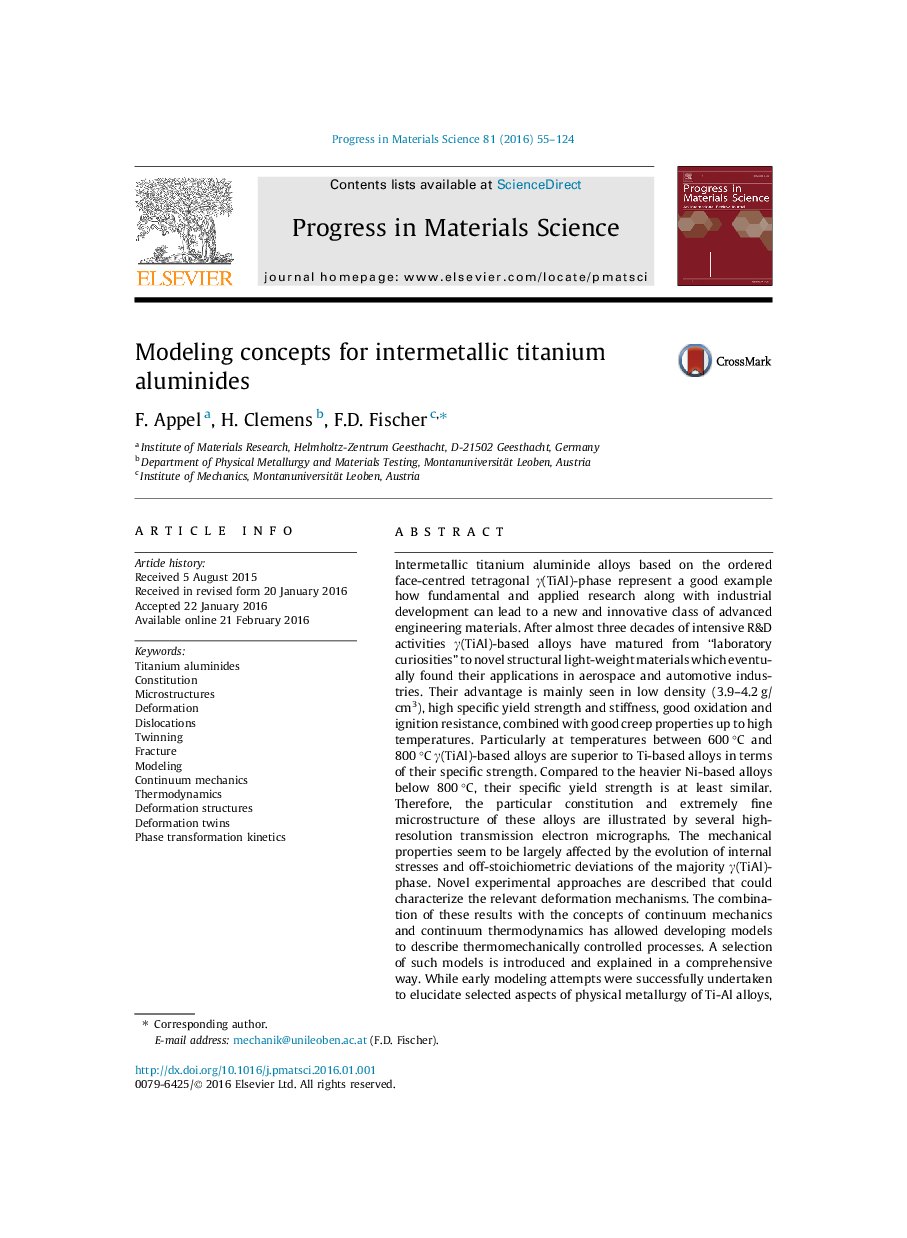| کد مقاله | کد نشریه | سال انتشار | مقاله انگلیسی | نسخه تمام متن |
|---|---|---|---|---|
| 1655881 | 1517433 | 2016 | 70 صفحه PDF | دانلود رایگان |
عنوان انگلیسی مقاله ISI
Modeling concepts for intermetallic titanium aluminides
ترجمه فارسی عنوان
مفاهیم مدل سازی برای آلومینیدهای تیتانیوم بین الملل
دانلود مقاله + سفارش ترجمه
دانلود مقاله ISI انگلیسی
رایگان برای ایرانیان
کلمات کلیدی
Deformation - تغییر شکلTitanium aluminides - آلومیناید تیتانیومThermodynamics - ترمودینامیکDeformation twins - تغییر شکل دوقلوهاPhase transformation kinetics - جنبش تبدیل فازdislocations - دررفتگیTwinning - دوقلوهاMicrostructures - ریزساختارها یا میکروساختارDeformation structures - ساختارهای تغییر شکلFracture - شکستگیconstitution - قانون اساسیModeling - مدلسازیContinuum mechanics - مکانیک محیط پیوسته
موضوعات مرتبط
مهندسی و علوم پایه
مهندسی مواد
فناوری نانو (نانو تکنولوژی)
چکیده انگلیسی
Intermetallic titanium aluminide alloys based on the ordered face-centred tetragonal γ(TiAl)-phase represent a good example how fundamental and applied research along with industrial development can lead to a new and innovative class of advanced engineering materials. After almost three decades of intensive R&D activities γ(TiAl)-based alloys have matured from “laboratory curiosities” to novel structural light-weight materials which eventually found their applications in aerospace and automotive industries. Their advantage is mainly seen in low density (3.9-4.2 g/cm3), high specific yield strength and stiffness, good oxidation and ignition resistance, combined with good creep properties up to high temperatures. Particularly at temperatures between 600 °C and 800 °C γ(TiAl)-based alloys are superior to Ti-based alloys in terms of their specific strength. Compared to the heavier Ni-based alloys below 800 °C, their specific yield strength is at least similar. Therefore, the particular constitution and extremely fine microstructure of these alloys are illustrated by several high-resolution transmission electron micrographs. The mechanical properties seem to be largely affected by the evolution of internal stresses and off-stoichiometric deviations of the majority γ(TiAl)-phase. Novel experimental approaches are described that could characterize the relevant deformation mechanisms. The combination of these results with the concepts of continuum mechanics and continuum thermodynamics has allowed developing models to describe thermomechanically controlled processes. A selection of such models is introduced and explained in a comprehensive way. While early modeling attempts were successfully undertaken to elucidate selected aspects of physical metallurgy of Ti-Al alloys, many experimental findings, particularly for modern multi-phase alloys based on γ(TiAl) with rather complex constitution and microstructure are still waiting for explanation.
ناشر
Database: Elsevier - ScienceDirect (ساینس دایرکت)
Journal: Progress in Materials Science - Volume 81, August 2016, Pages 55-124
Journal: Progress in Materials Science - Volume 81, August 2016, Pages 55-124
نویسندگان
F. Appel, H. Clemens, F.D. Fischer,
